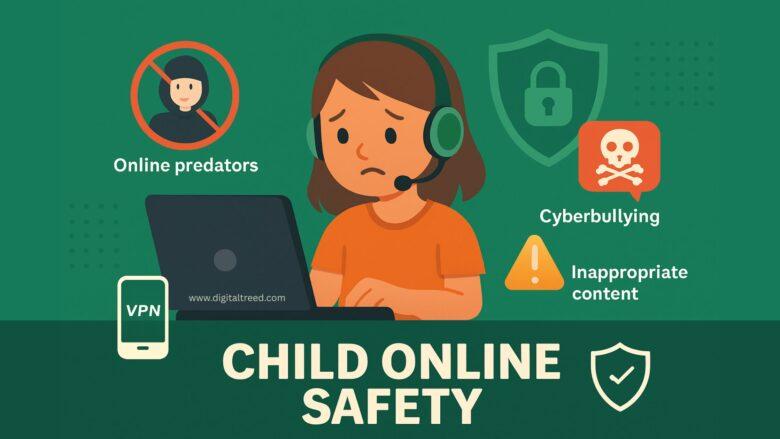As a parent or guardian, how confident are you in your child’s online safety? In this digital world where screens are as common as books, one must be aware of the dangers lurking online. Online predators, cyberbullying, and other digital threats can cause serious risks to children.
But how can you protect the little ones’ online experience while still allowing them to enjoy the benefits of the internet? We have created this guide with some useful tips to save your children from online predators and threats, as well as how to make their online activity secure and confidential.
Understanding the Online Risks Children Face
Before we discuss prevention strategies, it is important to understand the types of threats your child may encounter online.
1. Online Predators
Online predators use the internet to exploit children. They often pretend to be someone else and try to build trust with children before trying to meet them in person or gather compromising information. This can happen on social media, gaming platforms, or email.
2. Cyberbullying
Cyberbullying happens when a child is harassed, humiliated, or threatened online. It is much more dangerous than traditional bullying, and if not taken seriously, the effects are often much more complex to escape. It can happen through text messages, comments, social media posts, or even group chats.
3. Inappropriate Content
The internet is flooded with inappropriate content that children can easily access by mistake. Content types include adult material, violent images, disturbing videos, and so on. It’s your responsibility to make sure that your child is protected from encountering such content.
4. Phishing and Scams
Phishing scams aim to trick individuals into revealing personal information, including passwords or credit card numbers. Children may unknowingly fall victim to these scams if they’re not educated on identifying suspicious emails, links, or messages.
Tips to Protect Your Child’s Online Activity
Luckily, these dangers can be greatly reduced, and your child can experience a safer online activity in the following ways.
1. Use a VPN
One of the easiest and most effective ways to protect your child’s online activity is using a mobile VPN (Virtual Private Network). A VPN encrypts the internet connection, which makes it harder for third parties to track your child’s online behavior. Through the VPN service, your child will be able to use the internet without worrying about revealing his/her details and thus harder to be reached by any predators or hackers.
Overall, a VPN helps…
- keep the browsing history hidden from strangers.
- protect the sensitive information from cybercriminals.
- help filter the harmful content by restricting access to specific websites.
How to use a VPN?
Using a VPN is quite simple. Consider the following:
- Choose a reputable VPN service with a strong encryption policy.
- Set up the VPN on all devices your child uses, such as smartphones, tablets, and laptops.
- Educate your child on why using a VPN is important for privacy.
2. Use other cybersecurity tools
Passwords are difficult to manage, and this situation has been compounded by children’s increased use of various accounts. A password manager can help parents store and manage
passwords securely. It will ensure that your child is not using weak or repeated passwords across multiple accounts.
Another important topic is how easily personal information can be stolen or misused. With children spending more time online, their identities can be just as vulnerable as adults. That’s why it’s worth investing in the best identity theft protection services to help safeguard your child’s and family’s sensitive information.
3. Set Up Parental Controls
Practically, most devices and apps have pre-installed parental controls that allow you to limit access to different content and screen time. These controls can prevent your child from using harmful content and promote healthy online behavior.
- Activate browsers and streaming channels filters.
- Time restrictions should be put on using the apps to avoid experiencing unnecessary screen time.
- Keep track of your child’s activities on the internet by monitoring to make sure that they are not doing something risky.
Conclusion
Screen time and filters are not enough to keep your child safe online. It is about creating a culture of safety and openness in your home. While you take necessary steps to protect your children, don’t forget to engage in regular conversations about online threats with them.

Leave a Reply